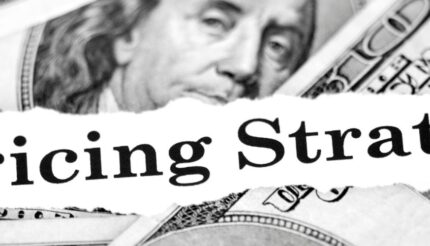As a business owner, sometimes it can be difficult to understand why your business is not profitable, or why you are not performing as well as you could be. Especially in the restaurant industry, which has been heavily affected by the recent pandemic. In this article, we will discuss the different methods you can use to try to make your restaurant profitable.
What are your challenges in a restaurant?
The first step is to work out where your challenges are. Take a look at your current performance and work out what’s going well and what needs improving.
Some key questions to ask yourself are:
How many customers do we need to break even?
How many customers do we typically get per sitting?
How much do those customers spend on average? And what are they spending it on? What type of food, how many courses do they have? What type of drinks and how many do they buy?
Do all of the items on your menu make you money or do you need to adjust your profit margins?
Do your customers come back time and again or do they visit once and not come again?
Are your customers recommending you to other people they know?

Understanding your break-even point based on what the average table spends with you each time they come and by understanding the costs to run your business you can work out the number of tables you need to serve to cover the basic costs of running your business. The formula to do this looks like this:
Break Even = fixed costs / (sales price – variable costs)
In other words:
The number of tables you need to serve = The fixed costs of running your business* divided by the average amount a table spends – the variable costs** involved.
Fixed costs are the costs you would still have to pay if you had no customers. Examples are rent, rates, phone bill, staff wages, insurance etc.
Variable costs are the costs you only pay when a customer orders food or drink – in your case as a restaurant owner they are most likely to be the ingredients costs of the food or drinks they order.
The bottom part of this equation – average spend – ingredients costs will give you an idea of your gross profit. If you divide this by the average spend the percentage you get is your Gross Profit % and we can use this to see if you are making enough on what you sell.
Are you serving enough customers?
Once we understand how many tables you need to serve to break even you can look at how many you typically serve per day, per week or per month to understand whether your challenge is; not enough customers, not making enough money on the customers you are getting or potentially both.
Here are some solutions to common problems we see in restaurants.
Understanding your Audience to Increase Profits
One important factor which will impact your daily operations and marketing is your target audience. You should consider these factors when working out your target audience:
- Demographics – What age and gender are your main audience?
- Geographics – Are all of your customers local?
- Interests – What are your customers interested in?

Once you have decided who you want to target then it is much easier to promote your restaurant to them and to ensure the experience at your restaurant is appealing to them. Creating a marketing plan advertising your restaurant is key to building awareness and gaining new customers. You should consider how you are going to attract customers through marketing channels; you could use offline marketing strategies such as leaflets and posters, or online marketing strategies such as social media.
Recommended Reads: How to Increase Dental Practice Revenue by 35%?
Create a Google Business Profile
When customers search for a local restaurant or for your specific restaurant, make sure you stand out by having a detailed Google Business Profile account. This will allow new customers to find you, and for existing ones to learn your business details (such as contact details and opening hours). Not only is Google Business Profile free, it’s also the perfect way to advertise yourself to potential customers.
Review your opening hours
Based on your target market – are you open at the right times? Would you get more customers if your opening hours were different? Or are there some services you don’t need to be open for?
If your target market is retired people you may want to focus more on lunch rather than evenings, conversely if your goal is to appeal to teenagers then you’re probably looking at after school through until 9pm or if you want you adults then your focus may be on 7-10pm and possibly even later at the weekends.
Loyalty Cards/Schemes
Let’s get your existing customers to come back more often. Can you incentivise them e.g. for your 6th visit get a free dessert or come back inside the month and get 5% off your bill etc.
The goal with these schemes is to give away something that doesn’t cost you very much but has a high value to the customer e.g. a free drink or dessert where the profit margin is often high. Recommend a friend, Offer a discount to get other people to come and eat at your restaurant i.e. the Smith family tell their neighbours the Jones’s what a fabulous time they had and that if the Jones’s book a table and use code xxx they’ll get a free drink on arrival. You can then also reward the Smith’s when they next visit with a free drink for having introduced the Jones’s to your restaurant.
Customer Service and Training Staff
Your marketing and menu could be spot on, but if your customer service is anything but high-quality, your customers will not be returning anytime soon. Excellent customer service comes with staff training, including how to talk to a customer, how to handle tricky situations and understand every meal and service the restaurant offers.
Well-trained and knowledgeable staff are the key to a great restaurant and will keep your customers coming back time and again.
Analyse the Restaurant’s Profit Margins
You should individually analyse each item, looking into production costs and labour costs. This will help you determine whether you are currently making profit on this item.
Typically starters, desserts and drinks such as cocktails are high-margin items. All items on your menu should make you a minimum profit margin.
Additionally, you can refine your menu by analysing how popular a dish is. If there’s a certain dish that is not popular and is expensive to serve, then it might be worth removing the item.
Here are some strategies to help you increase the money you make for the customers you currently have:
- Increase your prices – review any items with lower profit margins and adjust the prices
Assess other local restaurants that are similar – what prices are they charging? If they are higher and your atmosphere is better, food quality is higher and service is top notch then increase your prices - Upselling side orders, starters and deserts – Often high margin and “optional” a great waiter or waitress can often ensure people order more of these than they would do otherwise offer a Takeaway Menu if you have noticed that you have quieter periods, or even struggle to fill seats during peak hours, having a takeaway option is the perfect way to keep the kitchen running while also making more money for the business. A takeaway option helps many people who might be too busy to sit in the restaurant to have a meal, but they may be able to pick it up and eat it elsewhere.
- Use your drinks menu – Do you offer “pre-dinner drinks”, such as cocktails and gin and tonic? These almost certainly result in diners ordering another drink with their meal and these drinks are often high-profit margin items. Ensure your staff are maximising all orders by checking back to take additional drinks orders and topping wine glasses up frequently.
- Offer “after dinner drinks” as well – whether that’s coffee and tea or alcoholic beverages. If you know you won’t get another customer at the table in that sitting then encourage the customers to linger and have another drink or two. If you are going to turn the table then perhaps encourage the first customers to come and have a drink in your bar area to keep them in your restaurant rather than moving on to someone else’s bar?
Find small ways to save money
There are many parts of owning and running a restaurant that can cause waste and loss of money. This includes leaving lights on when not needed, keeping electronics on when not in use and using cleaning products or napkins in excess when cleaning. Despite these only being small changes, these are perfect business tips for ways to save money.
If you would like a conversation about the ideas included in this article or want to look specifically at how to make more money from your restaurant please get in touch with us.





